Contents
The green-red russula mushroom is a typical representative of the extensive Russula family. Another name for the fungus is russula. Its distinctive feature is stable yields from season to season, since this mushroom practically does not react to changes in humidity.
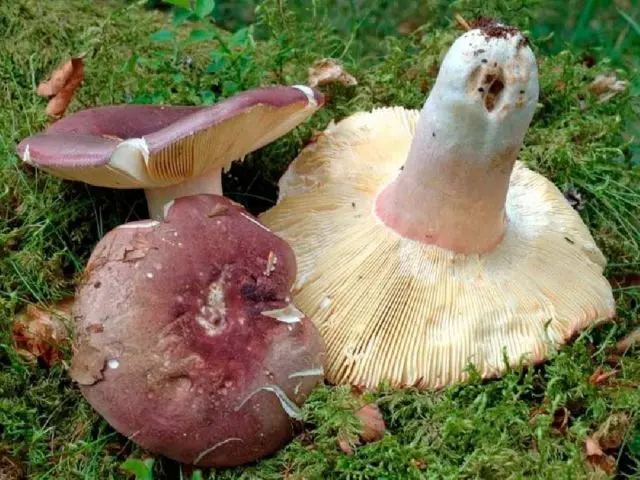
Where do green-red russula grow
The range of green-red russula is very extensive: the fungus is found everywhere in the temperate climate of Asia, Europe and North America.
It prefers deciduous forests; it is problematic to meet a green-red variety in coniferous forests. Large single mushrooms or their small colonies of 5-6 specimens can most often be found near oak, birch or maple, with which it enters into a symbiotic relationship during the formation of mycorrhiza.
What do green-red russula look like
Green-red russula is a very conspicuous mushroom. Thanks to the large caps pressed inward (more than 15 cm in diameter), they are clearly visible from great distances. Due to the relatively high stem, the fruiting body always rises above the level of the cover vegetation.
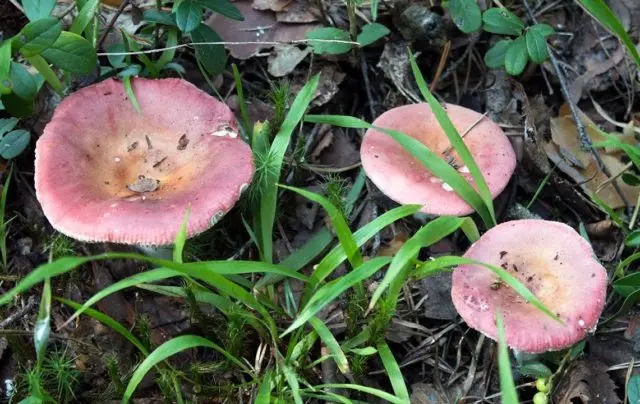
Not the last role is played by coloring. The red hat is clearly visible against the background of forest grass.
Description of russula like
In young mushrooms, the caps are spherical in shape. As they grow, they first transform into flat ones, and then generally become depressed inward. Moreover, the edges of the cap can be bent to such an extent that the hymenophore layer is clearly visible from the side and from above. The diameter of the hats in some specimens can reach up to 20 cm. The hat has smooth edges.
The color of the upper part of the cap can have various shades of red: from red-brown to red-violet. You can meet representatives with a gradient color.
The pulp of the mushroom is dense, having a white color. Near the skin of the cap, the color of the flesh is slightly yellowish.
The hymenophore occupies the entire space from the bottom of the cap – from the stem to its edge. It consists of thick radial plates that can branch. The color of the hymenophore is cream, changing to dark yellow closer to autumn. The hymenophore plates are very tightly fused with the fungus stem. The spore powder is dark yellow in color.
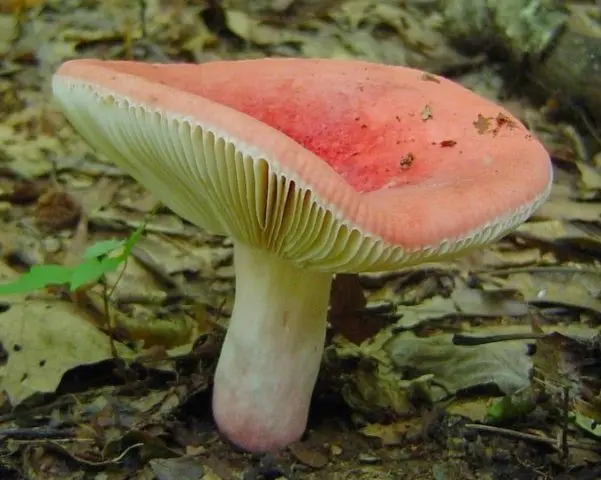
The powerful leg of the mushroom can reach up to 11 cm in height, and its diameter sometimes reaches 3 cm. It always has a cylindrical shape. The color of the stem is white, in rare cases white-pink or white-yellow.
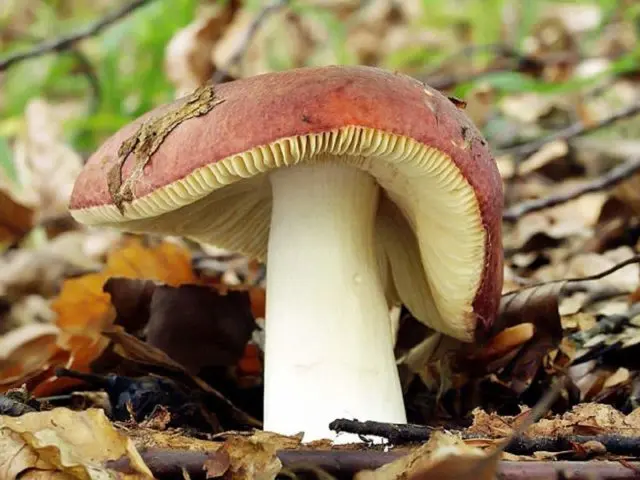
The leg of the green-red russula is whole, it does not have an internal cavity. Near the surface, the pulp is dense and elastic, in the center – a little loose.
Is it possible to eat green-red russula
Russula green-red belong to the edible mushrooms of the third category. They can be salted without prior heat treatment, however, other cooking methods involve boiling the mushrooms for at least 15 minutes.
Taste qualities of russula like
In terms of taste, green-red russula loses a little to food or wonderful varieties, but in this matter it is not so much the taste and smell that matters, but the consistency of the pulp. In green-red mushrooms, it is slightly more rigid.

Benefit and harm
The benefits of russula, like all mushrooms, lie in the large amount of protein contained in the fruiting bodies. In relation to the mass of protein to the total mass of the fruiting body, russula green-red are significantly ahead of legumes and practically approach white meat.
Representatives of the Russula family do not contain poisonous mushrooms, so when using them, you can not be afraid for your life. However, do not forget that in large quantities, mushrooms are not very healthy food, since the body spends a lot of time and effort on their processing.
It is not recommended to use mushrooms for children under 5 years old, as well as for pregnant and lactating women.
False twins of russula like
Russula has an outward resemblance to many of its relatives from the Russula family. And although there are no poisonous mushrooms among them, there are many conditionally edible ones. Their use will not lead to death or even poisoning, however, their taste will be very mediocre or even unpleasant.
These mushrooms include, first of all, russula stinging. Outwardly, it resembles russula, however, even after prolonged heat treatment, it has a very bitter taste, surpassing even chili peppers.
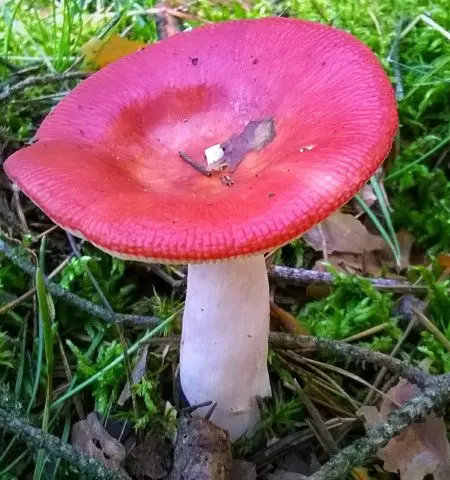
Unlike green-red, stinging russula is found equally in both deciduous and coniferous forests, since it can form mycosis with the roots of almost any tree. Outwardly, it is very difficult to distinguish it from green-red, therefore, a tasting method of identifying it is used.
It is necessary to try the pulp of the mushroom in the place of the cut with the tongue. This will not cause poisoning, but the bitter taste will immediately make it clear the species of the fungus.
Another representative of the family, Mayr’s russula, has similar properties.
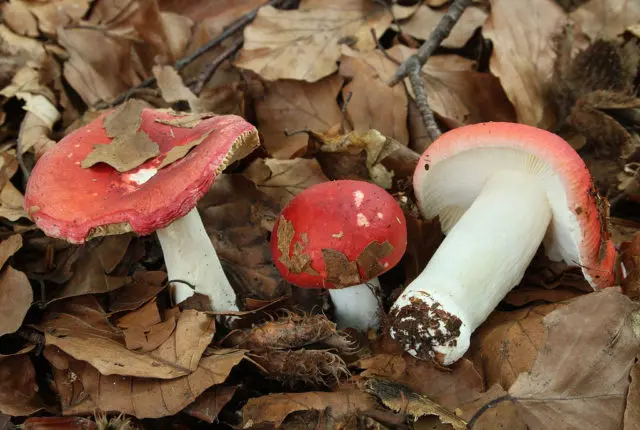
Her external differences from the green-red are also insignificant. The cap of this species rarely exceeds 14 cm in diameter. You can also distinguish it from kid by the taste of the cut.
The next false mushroom is browning russula. Here the differences are already clearly visible visually, but in different conditions they can manifest themselves in different ways. The cap of this species is usually covered with a thin layer of mucus that is not immediately noticeable. This variety is characterized by an unpleasant odor, which is not always possible to neutralize during heat treatment.
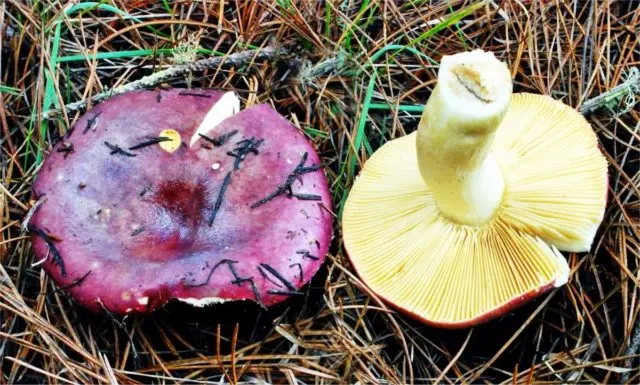
You can distinguish a browning russula by the already indicated mucus, as well as by the color of the cut. After some time after cutting, its color changes to pink.
Also, russula tuberculate-azure can be attributed to false twins. It has many shades (from blue-green to red-violet), some of which may coincide with the coloring of the green-red russula.
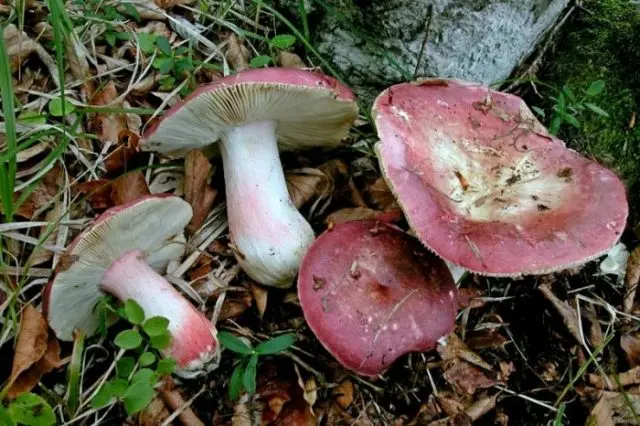
This species has an unpleasant odor and taste. You can also distinguish them by changing the color of the cut. Unlike the green-red ones that do not change color, the tuberculate-azure ones change the color of the cut to shades that are completely uncharacteristic for other species – from gray to bluish.
The use of russula green-red
Mushroom picking is carried out from the beginning of July and lasts until the first frost. Russulas like kid belong to universal mushrooms: they can be used both for salting and for cooking first and second courses.
However, it is recommended, taking into account their features, to use them only in the following forms:
- salty;
- dried;
- fried.
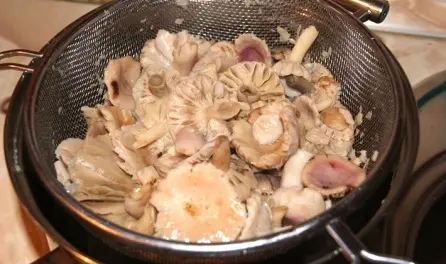
In the latter case, before frying the mushrooms, it is necessary to remove the skin from the cap and cook for 20 minutes after boiling.
Conclusion
Russula green-red, although it belongs to the third category, has a good taste and can be used in salting or drying without pre-treatment. The fungus is found predominantly in deciduous forests, as it enters into symbiosis with only a few tree species. This species has a large number of twins, so when collecting it, care must be taken not to spoil the taste of dishes prepared from it.









